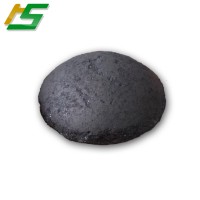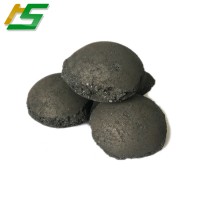First, the production conditions
Using 3t medium frequency induction electric furnace smelting, charge ratio stability: 20% pig iron, scrap 40%, 40% of the charge back, adding appropriate amount of carbon agent, ferrosilicon, ferromanganese, SiC, FeS adjust the chemical composition of molten iron, Time for the molten iron in the furnace to join more than half, the tensile strength and hardness are obtained Ф30mm single cast tensile test bar, test sticks for the furan resin sand shape.
Second, the test results and analysis
1. Effect on graphite morphology
As shown in Fig. 1 and Fig. 2, the samples are taken from the heart of the tensile test bar.
The chemical composition of FIG. 1 is as follows: wC = 3.18%, wSi = 1.85%, wMn = 0.83%, wP = 0.043%, wS = 0.078%. Graphite morphology: Flake graphite distribution is type A, with a small amount of C-type graphite, graphite length of 4 to 5.
The chemical composition of Fig. 2 is as follows: wC = 3.20%, wSi = 1.83%, wMn = 0.86%, wP = 0.043%, wS = 0.076%. Graphite morphology: Flake graphite distribution is type A, with a small amount of C-type graphite, graphite length of 5 to 6 grades.
2. Impact on the hardness of cast iron in tensile strength
HT250 electric furnace smelting to do the production test, the same ingredients in the furnace to ensure the same chemical composition as possible, the temperature of the molten iron is 1515 ~ 1525 ℃, the pouring temperature is 1380 ~ 1430 ℃, the bottom of the substrate is incubated with 0.3% Silicon Barium inoculant Treatment, testing the chemical composition and the corresponding strength and hardness in Table 1. The experimental results show that under the same melting conditions and similar chemical composition, the mechanical properties and hardness of the molten iron pretreated by SiC are improved to some extent compared with the untreated molten iron.
3. Impact on machining performance of cast iron
Shown in Figure 3, the piece is 0L59011 left cover is the company's products T165 parts. Material HT200, weight 45kg. The main wall thickness of this piece is 8 ~ 10mm. In the pre-production process, we mainly improve the processing performance by means of high silicon-carbon ratio. As the induction furnace induction furnace smelting cast iron, large degree of undercooling, white mouth tend to be strong, under the same carbon equivalent conditions, with induction furnace smelting cast iron compared with the cupola melting, eutectic transformation of the large undercooling Much of the castings that were produced in advance were found to be whitened at the edges of the castings during machining and were difficult to machine and annealed only to meet machining requirements. By increasing carbon equivalent The method of using high silicon to carbon ratio did not receive good results. Later, we tested the hot metal pre-treatment process SiC and high silicon-carbon ratio method for process validation, first determine the chemical composition of the original wC = 3.20% ~ 3.30%, wSi = 2.20% ~ 2.30%, wMn = 0.80%, wP≤0.50%, wS = 0.050% ~ 0.10%, pretreatment agent SiC dosage remained at 0.8%, we produced two batches of 40 processing tracking validation, no edge white The phenomenon of the phenomenon, and the processing performance is good, the complete lifting of the machined material hard phenomenon.
Third, the conclusion
(1) Pretreatment of molten iron with SiC in the process of melting gray cast iron by induction furnace can improve the morphology and size of graphite.
(2) The pretreatment of molten iron with SiC in the process of melting gray cast iron by induction furnace can increase the tensile strength and hardness. Under the same conditions, the tensile strength can be increased by 20-30MPa and the hardness can be increased by 10-25HBW.
(3) The pretreatment of molten iron in the process of melting gray cast iron by induction furnace can significantly improve the cutting performance and reduce the tendency of white castings.



